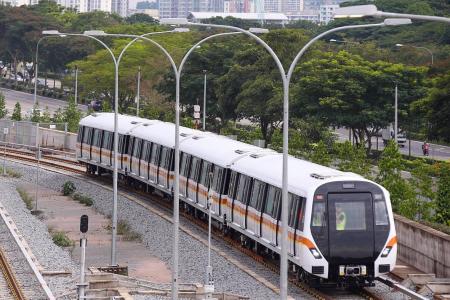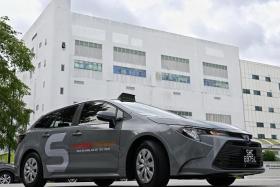Train cars on TEL will have five doors, instead of four, on each side
Commuters using the Thomson-East Coast Line (TEL), which opens progressively from next year, can look forward to a more reliable and comfortable ride.
Train cars for the line will feature five doors on each side - instead of four on other MRT trains - to facilitate quicker boarding and alighting.
About 60 of the fleet of 91 four-car trains will also have tip-up seats, which will offer more standing space for commuters during rush hour. There will be 10 rows of tip-up seats per train.
Details of these features were shown to Transport Minister Khaw Boon Wan yesterday when he visited the Mandai Depot and was given a tour of the first train, which was delivered from China in May.
The TEL trains will also be fitted with a new LCD board, to provide commuters with information such as the MRT network map, train travel direction and which side of the train doors will be opening.
The 43km TEL will open progressively from next year and be fully completed in 2024.
The 31-station line will connect commuters in the eastern region to the city centre, as well as those living in the Woodlands and Thomson areas.
The Land Transport Authority said two of the TEL trains will be fitted with the automatic track inspection system comprising cameras, lasers and sensors. These can help detect defects on the tracks, such as rail cracks, missing track-rail fasteners or even foreign objects.
The 91 TEL trains are manufactured in China by a consortium formed by Japan's Kawasaki Heavy Industries and China's CSR Qingdao Sifang Co. The consortium won a $749 million contract in 2014 to supply the trains.
Senior Minister of State for Transport Janil Puthucheary, who was at Mandai Depot yesterday, said the latest Land Transport Masterplan, to be launched next year, will look to increase the density, reach and accessibility of public transport, while also examining how to integrate buses and trains with other first- and last-mile options such as bicycle-sharing and ride-hailing services.
Get The New Paper on your phone with the free TNP app. Download from the Apple App Store or Google Play Store now



